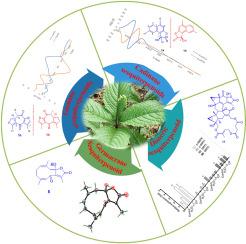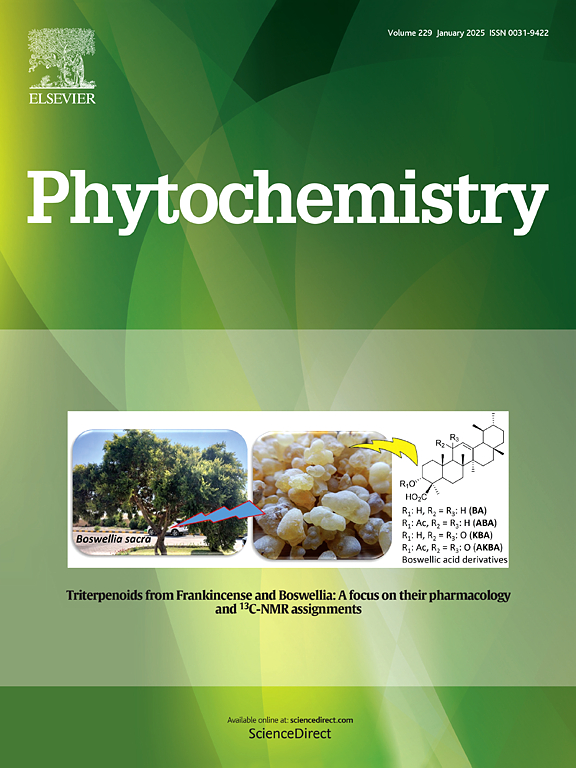来自 Chloranthus henryi 的结构多样的倍半萜类化合物及其对 H2O2 损伤的 PC12 细胞的神经保护活性
IF 3.2
2区 生物学
Q2 BIOCHEMISTRY & MOLECULAR BIOLOGY
引用次数: 0
摘要
从 Chloranthus henryi Hemsl 的全草中分离出了 15 种未曾描述过的倍半萜单体,包括六对倍半萜对映体(1a/1b-3a/3b 和 5a/5b-7a/7b)和三种类似物(4、8 和 9),以及两种已知的倍半萜二聚体(10 和 11)。通过光谱数据分析、ECD 计算和单晶 X 射线衍射,对它们的结构进行了表征。化合物 1a 和 1b 是高度芳香的卡迪那类倍半萜化合物。在 10 μM 的浓度下,化合物 8、10 和 11 对 H2O2 诱导的 PC12 细胞损伤有很强的神经保护活性。化合物 10 和 11 能明显降低 ROS 的水平。此外,在 H2O2- 诱导的 PC12 细胞损伤中,化合物 11 通过激活 AMPK/SIRT 信号通路,提高了 p-AMPK、p-SIRT1 和 SIRT3 的水平。本文章由计算机程序翻译,如有差异,请以英文原文为准。

Structurally diversified sesquiterpenoids from Chloranthus henryi and their neuroprotective activities on H2O2 damaged PC12 cells
Fifteen undescribed sesquiterpenoid monomers, including six pairs of sesquiterpenoid enantiomers (1a/1b–3a/3b and 5a/5b–7a/7b) and three analogues (4, 8, and 9), together with two known sesquiterpenoid dimers (10 and 11) were isolated from the whole plant of Chloranthus henryi Hemsl. Their structures were characterized by spectroscopic data analysis, ECD calculations, and single crystal X-Ray diffractions. Compounds 1a and 1b were highly aromatic cadinane-type sesquiterpenoids. At a concentration of 10 μM, compounds 8, 10, and 11 exhibited potent neuroprotective activity against H2O2-induced PC12 cell damage. Compounds 10 and 11 significantly decreased the level of ROS. In addition, compound 11 increased the levels of p-AMPK, p-SIRT1, and SIRT3 in the H2O2-induced PC12 cell damage via activated the AMPK/SIRT signaling pathway.
求助全文
通过发布文献求助,成功后即可免费获取论文全文。
去求助
来源期刊

Phytochemistry
生物-植物科学
CiteScore
6.40
自引率
7.90%
发文量
443
审稿时长
39 days
期刊介绍:
Phytochemistry is a leading international journal publishing studies of plant chemistry, biochemistry, molecular biology and genetics, structure and bioactivities of phytochemicals, including ''-omics'' and bioinformatics/computational biology approaches. Phytochemistry is a primary source for papers dealing with phytochemicals, especially reports concerning their biosynthesis, regulation, and biological properties both in planta and as bioactive principles. Articles are published online as soon as possible as Articles-in-Press and in 12 volumes per year. Occasional topic-focussed special issues are published composed of papers from invited authors.
 求助内容:
求助内容: 应助结果提醒方式:
应助结果提醒方式:


